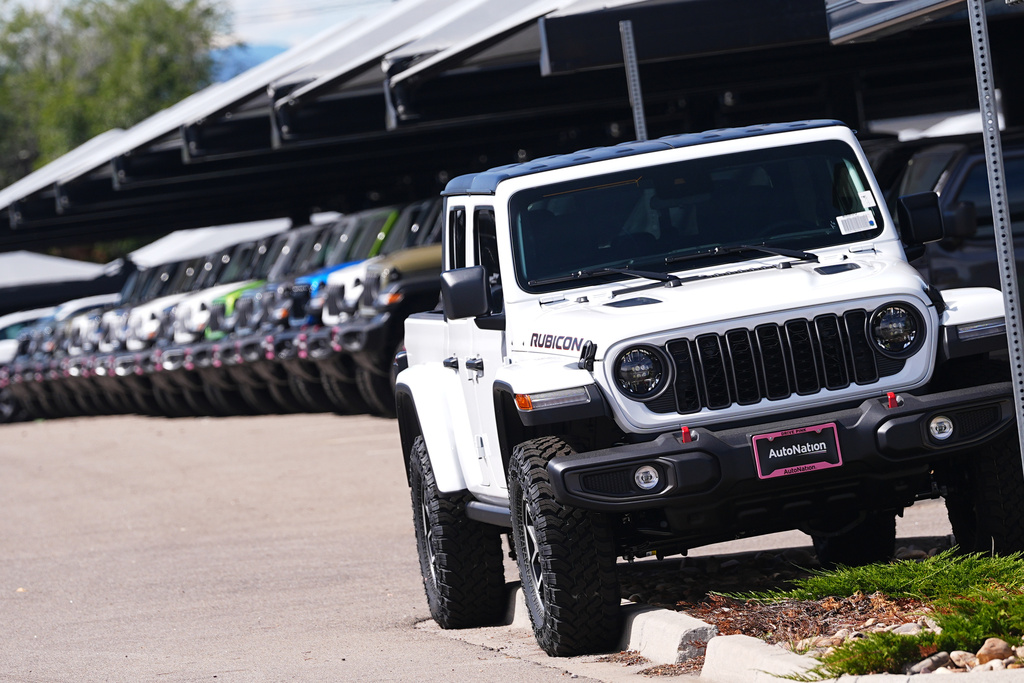By JOSH JACQUOT Edmunds
More car buyers are finding themselves in a tough spot financially. According to a recent report from Edmunds, more than 26% of new-vehicle trade-ins in the second quarter of 2025 had negative equity — the highest share in more than four years.
Negative equity refers to a situation in which you owe more on your vehicle than it’s worth, leaving you “upside down” or “underwater” on your loan. Negative equity is an acute problem when you trade that vehicle for another new one because you’ll have to pay off what you owe while simultaneously taking on the new loan payments. The average amount owed on these upside-down loans was $6,754, underscoring the mounting risks of car debt in today’s market.
“Consumers being underwater on their car loans isn’t a new trend, but the stakes are higher than ever in today’s financial landscape,” said Ivan Drury, Edmunds’ director of insights. “Affordability pressures, from elevated vehicle prices to higher interest rates, are compounding the negative effects of decisions like trading in too early or rolling debt into a new loan.”
In other words, ending up upside down on your loan is becoming easier than ever. But you can take steps to avoid the worst of negative equity.
Keep your current vehicle longer
If you’re already upside down, the simplest way to avoid digging a deeper financial hole is to hold on to your current vehicle and keep making payments. Time and patience are often your best allies. Every payment you make lowers the balance, while depreciation on your vehicle decreases after the first few years. Eventually, the loan balance will fall below the vehicle’s value.
This strategy requires discipline and the ability to resist the temptation to trade into something newer. But it will help you avoid spending money you don’t have to. According to Edmunds’ data, buyers who had negative equity on their current vehicle and rolled it into a new vehicle loan paid an average $915 per month, compared to an industry average of $756. They also financed $12,145 more than the typical new-vehicle buyer.
Hanging onto your current car until the balance catches up may not be exciting, but it’s often the surest way to avoid multiplying your debt.
Refinance or roll the debt into a new car lease
Refinancing can sometimes soften the blow of negative equity. If your credit has improved or interest rates are lower than when you first financed, a new loan might reduce your monthly payment and buy you time to catch up.
Another option is to lease your next vehicle rather than finance its purchase. You will still have to pay higher-than-typical monthly payments because you’ll be paying off your current vehicle’s negative equity along with your new vehicle’s lease payments. At the end of the lease, you are no longer upside down, and you’ll be walking away from your vehicle when the lease ends. But therein lies the rub. You won’t have a vehicle to use as a trade-in toward your next purchase. You can either lease again or finance your next new or used car purchase.
Avoid negative equity in the first place
The best solution is prevention. Edmunds experts note that buying a brand-new car often puts you in a depreciation hole the second you drive off the lot. A new car typically loses about 20% of its value within the first year, meaning even a modest loan can leave you owing more than the car is worth if you don’t make a big down payment. The solution? Buy used.
Buying a used vehicle helps you avoid the worst of depreciation. A 2- or 3-year-old vehicle will still have plenty of life in it, and it should still have warranty coverage. If peace of mind is important, consider buying a certified pre-owned vehicle. These vehicles must pass a dealership inspection and typically come backed by an extended warranty. This strategy helps minimize the risk of being underwater a year or two down the road.
Another key step is to make a larger down payment. Edmunds recommends aiming for at least 20% down. That cushion will help your loan balance shrink quicker than the car’s value, giving you positive equity sooner.
Finally, avoid ultra-long loan terms. It’s tempting to stretch financing to 72 or even 84 months to lower the monthly payment. But doing so keeps you upside down longer. A 60-month loan or shorter, while more expensive monthly, is much safer financially.
Edmunds says
Being underwater on a car loan isn’t catastrophic, but it does require discipline to escape. The first step is prevention: Buy smart, make a solid down payment, and avoid an overly long loan. If you’re already upside down, your best option is usually to keep the car until you regain equity.
____
This story was provided to The Associated Press by the automotive website Edmunds. Josh Jacquot is a contributor at Edmunds.
News
What to do if you’re underwater on your car loan

FILE - Unsold 2025 Gladiator pickup trucks sit on display outside a Jeep dealership Friday, Sept. 26, 2025, in Englewood, Colo. (AP Photo/David Zalubowski, File) Photo: Associated Press





